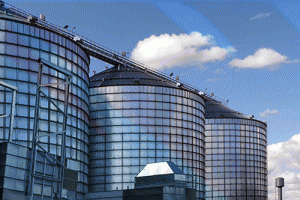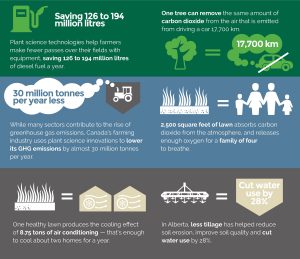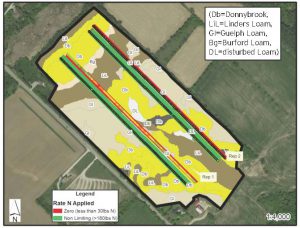GFO Newsletter for April/May 2017
GET THE LATEST NEWS FROM GRAIN FARMERS OF ONTARIO
PRODUCTION INSURANCE — NEW FORAGE SEEDING
Production insurance coverage is now available for an expanded range of crops, including brassica, cereal, grasses, and legume species. They include:
| • Alfalfa • Annual rye grass • Bird’s-foot trefoil • Bluegrass • Brome grass • Buckwheat • Creeping red fescue • Daikon radish • Meadow foxtail • Millet • Orchard grass • Oats • Oilseed radish |
• Peas • Perennial rye grass • Red clover • Reed canary grass • Sorghum • Soybeans • Sweet clover • Tall fescue • Timothy • Triticale • White clover • Vetch |
Farmers who enrol in the new forage seeding Production Insurance plan are offered an establishment benefit. A claim may be paid if an insured peril prevents your crop from establishing a stand.
For program details, visit agricorp.com or call 1-888-247-4999. •
THE ONTARIO ENVIROTHON — SUSTAINABLE AGRICULTURE
The Ontario Envirothon is a team-based competition for high school students who have an interest in the environment. The Envirothon began in 1994; it is an annual event where high school students compete against their peers at a regional level and winners move on to a provincial competition. It gives students a learning experience in key areas of forests, soils, wildlife, and aquatic ecosystems in a friendly competition format.
Each year the topic of the Envirothon changes and for 2017 the focus is on sustainable farming. As there are a number of misconceptions with modern day agriculture, Grain Farmers of Ontario had the opportunity to host an educational webinar on sustainable agriculture. Dave McEachren, director for District 4 (Middlesex) and Mike Buttenham, sustainability and environmental coordinator, provided attendees with an opportunity to see the innovation and technology the modern day farmer is using. McEachren spoke about some of the innovations he is using on his farm, such as precision agriculture, cover cropping, and the emphasis they place on soil health.
Some of the main learning objectives for students participating in the 2017 Envirothon include understanding the importance of the agriculture and agri-food sector to the community and economy of Canada, understanding farming practices as they relate to building soil organic matter, and understanding emerging trends in agriculture that are helping to improve sustainable farming practices. This year, winners of the Ontario competition have the opportunity to travel to Maryland at the end of July to participate in the National Conservation Foundation Envirothon. •
ON THE ROAD
Grain Farmers of Ontario had a busy month on the road in March. In addition to the March Classic, staff and directors met with farmers at the London Farm Show (March 8-10) and the Ottawa Valley Farm Show (March 14-16). Our booth at both events was a great place to connect with farmer-members and discuss issues and concerns about the upcoming growing season. Representatives from Grain Farmers of Ontario also attended the Commodity Classic in Texas to meet with and learn from our American counterparts in the grain industry and discuss regulatory issues and international trade. •
MARKET COMMENTARY
by Philip Shaw
The February United States Department of Agriculture (USDA) report lowered corn-ending stocks but kept U.S. soybean ending stocks the same from its January estimate (420 million bushels). U.S. wheat stocks were also lowered to 1.139 billion bushels, the largest since the 1980s. The USDA pegged Brazilian soybean production at 104 MMT, but reduced Argentinian soybean production down to 55.5 MMT.
In Ontario, the Canadian dollar continues to be a base of support for cash grain prices, fluttering around the 75 cent U.S. level. Despite that, the corn basis has actually softened over last month with captive supplies weighing on a captive market. Many southwestern Ontario wheat fields have emerged unscathed from this mild winter. •

























